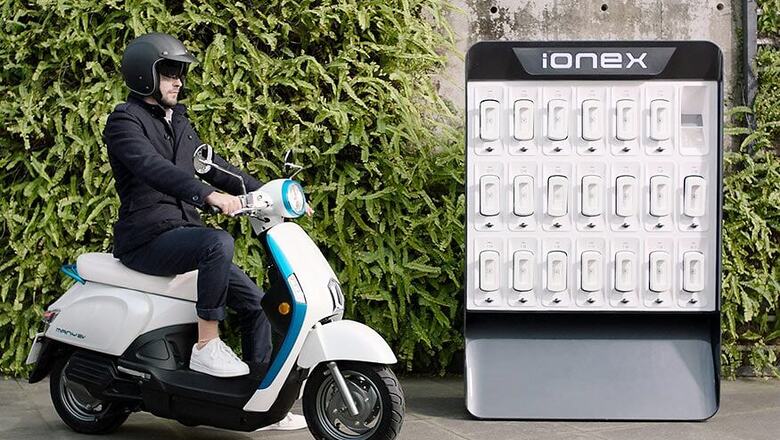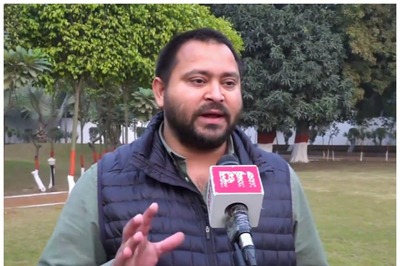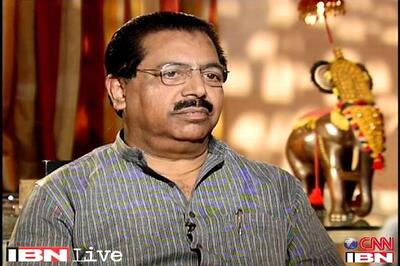
views
India’s growing population increases the travel needs both within and between cities, and this growth has led to several socio-economic and environmental challenges. There is a need to prioritize and reimagine mobility to combat pollution for a sustainable ecosystem. But any big change causes big disruption and the automobile industry won’t be immune to this fact. The desirable way to ease into the EV transition is to make it gradual and start with the low hanging fruit - initiate transition with 2Ws and 3Ws.
More than 80% of total vehicles in India comprise of 2Ws. This shows how different the Indian market is going to be when compared to the western countries. So imitating the west won’t help in achieving the same results. Based on India's experience from the country’s first multi-modal e-mobility pilot in Nagpur, the recently-published research by Ola Mobility Institute (OMI) suggests that Total Cost of Ownership (TCO) advantages for 4Ws is still years away. The electrification of 4W requires significant commitments to infrastructure, making it an expensive prospect overall.

This is also validated by the 2019 sales figures for EVs in India where a significant share is dominated by smaller vehicle segments. As of May 2019, 7.6L EVs were sold in India and more than 99% of it was from two wheelers (2Ws) and three wheelers (3Ws), and less than 1% from the four wheelers (4Ws). Considering India is a small vehicle dominated market, battery swapping in these segments presents a leapfrogging opportunity for India’s EV dreams. The key here is to make the transition easier for the users by finding a replacement for the existing petrol pump. While the industry is looking at charging stations, battery swapping should be treated as an alternate and a promising charging option for 2Ws and 3Ws.
To make the adoption in 2Ws and 3Ws convenient, cost-effective and seamless for the end users, we need to make the process as least disruptive as possible. Users would want the benefit of EV but not the inconvenience of refuelling. Traditional charging technology today takes between 2-6 hours to charge the battery. Taking cues from somewhat of a close cousin of EVs, the CNG vehicles where refuelling takes at least 10-20 minutes waiting in line, EV charging experience would be 10 times as inconvenient and equally undesirable. To not repeat the same mistakes, we have to make the refuelling experience as convenient as the petrol pumps. This is where battery swapping comes to our rescue. It will eliminate wait time for charging, make better use of land, reduce the size of batteries in vehicles and will give an increased available run time.
Taiwan based Kymco is a leading player in the battery swapping technology in two-wheelers. Here's how their Ionex technology works-
To gain consensus on battery swapping as an alternative for early adoption of e-2Ws and e-3Ws, Ola Mobility Institute (OMI), hosted a policy dialogue, GREENLIGHT. This platform brought together key market actors, thought leaders, influencers to discuss and align on a common basic understanding of battery swapping as a viable charging model. Some key players like EESL, BSES, Kinetic Green, Exicom, Delhivery, AEEE, Sun Mobility participated and collectively endorsed India’s first shared resolution on battery swapping launched by OMI. The shared resolution highlights battery swapping as a model for charging small vehicles, creating favourable economics for consumers, DISCOMs and energy operators. Few key benefits of battery swapping highlighted are:
• User benefits: It is quick (≤ 3 mins) and makes the experience as convenient as refuelling at a petrol pump. It gives the option of selling the car separate from battery thereby reducing the cost by almost 30-50% since battery is the most expensive part in it. Battery Swapping Operators (BSOs) are more in control of batteries and will ensure maximum battery usage and proper disposal.
• DISCOM benefits: This will increase revenue for DISCOMs by providing additional demand from reliable commercial end users. It can be flexible in terms of charging (can be done during non-peak hours), hence balancing the peak load of the grid.
• Energy operator benefits: This will ensure better utilization of the land as swapping requires a fraction of land needed compared to charging station. This will be an attractive option for urban areas and reduce the financial burden for the energy operators. This will provide new business opportunities.

Key players like SmartE have battery swapping stations at Delhi NCR and are working in partnership with Delhi Metro, Sun Mobility, Panasonic, Exicom and Amara Raja batteries to operate swapping stations. Ola has its own battery swapping unit at Gurgaon for e-rickshaws. The station has around 14 battery-swapping units with 20 battery packs per unit powering 100+ e-rickshaws. With all the merits attached to the concept of Battery Swapping, the government should consider operationalizing battery swapping as a part of the FAME II policy.
As the Government works towards creating enabling policies for EV’s, we hope that Battery Swapping is actively treated as a promising solution to accelerate the adoption of EVs in India especially for the smaller vehicle segment.
This article is written by Shilpi Samantray, Ola Mobility Institute




















Comments
0 comment